(Note: Visits to Yellow Dog Village are by appointment only. See the bottom of the article for information on how to visit.)
Throughout Pennsylvania, small communities were built as company towns for workers at nearby factories and mines. The Pittsburgh Limestone Company owned approximately 150 miles of limestone mines outside of Worthington, Pennsylvania, but the roads of the early 20th century and the distance from town made it difficult for workers to get too and from the mines on the banks of Buffalo Creek.
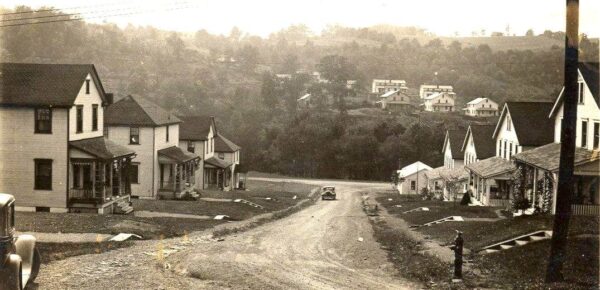
Wanting to improve productivity at the mines and prevent a union from forming, the mining company agreed to raise wages and build a community near the mines for their workers. Since a contract made between a company and its workers to ensure a union isn’t formed is known as a yellow dog contract, the village became known as Yellow Dog Village.
The homes at Yellow Dog Village were built in the 1910s and 1920s to provide housing for those that worked at the mine. Atop the hill, a large home was built for the mine’s manager, and the others were home to workers in the mines.
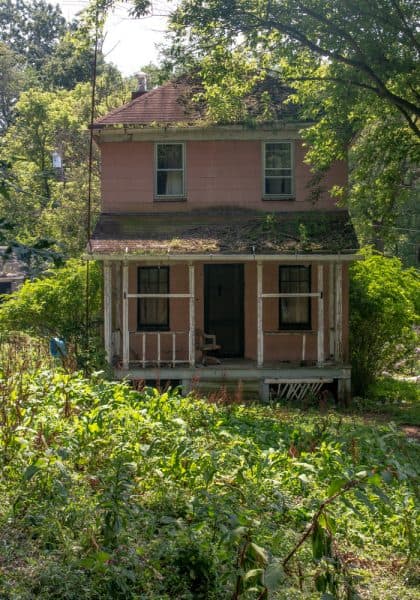
I met with the village’s former owner, Joe Meyer, on a hot summer day to learn more about the homes, explore them, and find out about his plans for the future. Since the property was a company town, Meyer was able to purchase the entire village in late 2014.
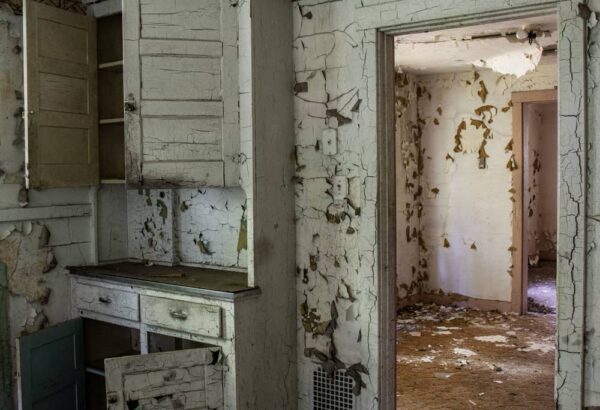
During his time owning the property, he lived in the mine manager’s house and worked to maintain the homes in their current condition and find funding to restore them to their past glory. In 2022, Meyer sold the village to another owner, who is also planning to fix up the village, though his long-term plans differ slightly from Meyer’s.
The property currently features 19 duplexes and single-family homes, the large manager’s home, and a boarding house.
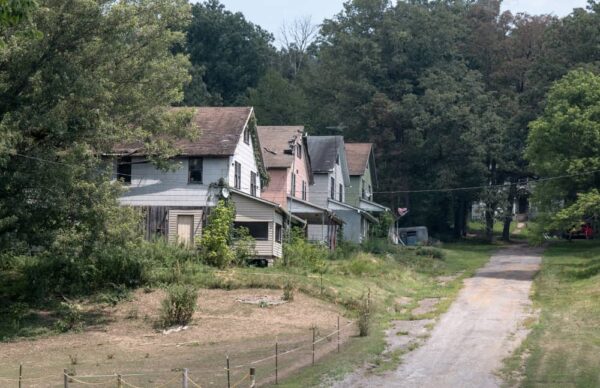
When the limestone mines closed in the 1950s, it was the beginning of the end of Yellow Dog Village. Nevertheless, the village was still home to families, and it wasn’t until around 2010 that the last family moved out.
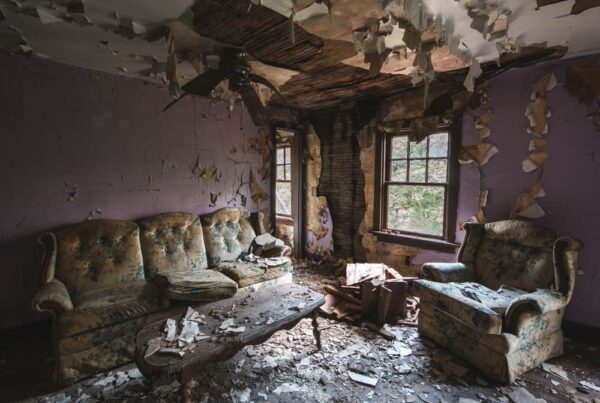
The final catalyst for the abandonment of Yellow Dog Village was the housing boom, which led to bad financial decisions, and ultimately the water being shut off at the property. To make money, anything of value was stripped from the homes, leaving them a sad shell of what they once were.
Between 2010 and 2014, the village sat abandoned and was heavily vandalized. Surprisingly, the vandalism did not include a significant amount of graffiti, which helped to preserve the historic charm of the village.
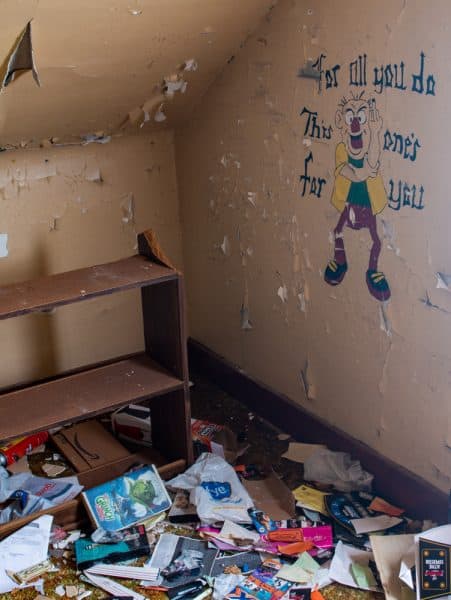
Still, vandalism to the homes, as well as the lack of care, caused the homes to fall into disrepair. Before I set out to explore the homes, Meyer assured me that the homes are almost all structurally sound, and it was surprising how few weak spots I found in the home’s floors while walking around.
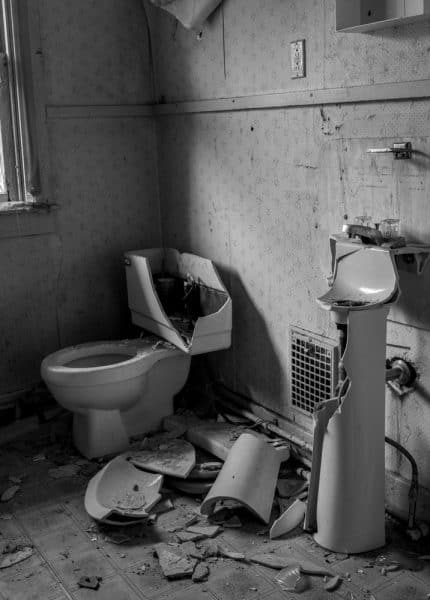
Even if the work required to fix up the homes is primarily cosmetic, there is a significant amount of cosmetic work that needs to be done to the homes to make them livable again.
While some homes are in better condition than others, most have an incredible amount of peeling paint, damaged flooring, and even smashed bathrooms. Interestingly, some rooms with ceiling fans have their blades pointing downward as much as 90 degrees.
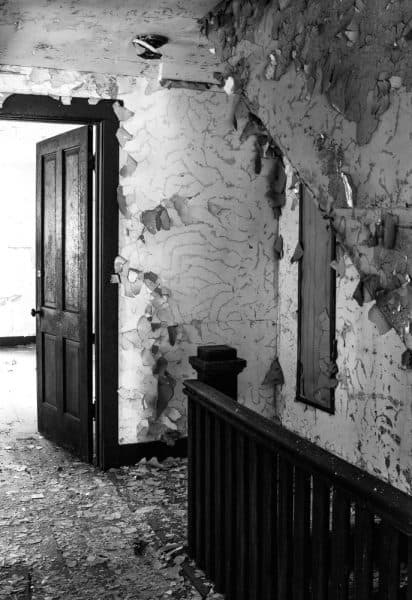
It’s truly amazing how much damage a bit of moisture can cause in just a few short years.
In addition to marveling at the power of moisture, it’s also fascinating looking at what was left inside of the homes.
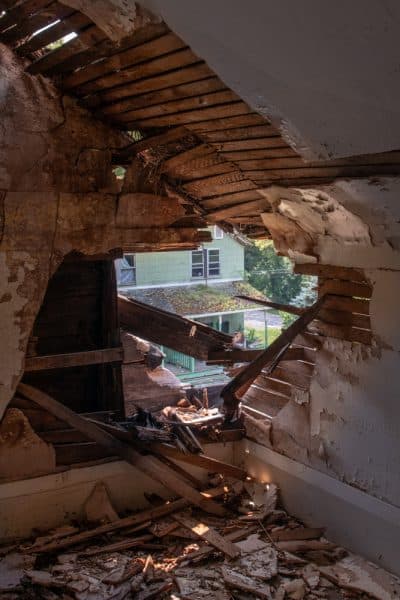
While a few of the homes were obviously well cared for and the former residents removed all of their personal belongings, other homes look almost like someone walked out and didn’t take anything with them.
In addition to large pieces of furniture like couches and mattresses that have been left to rot amongst the homes, I also found unopened cans of spam and jars of peanut butter in one home.
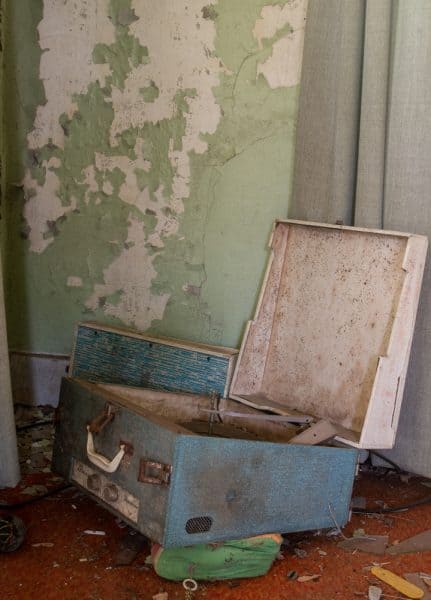
One home had reminders of how recently these homes were abandoned with VHS copies of films like “How the Grinch Stole Christmas” and “Saving Silverman” lying on the floor amidst professional wrestling trading cards.
What struck me the most, however, were the family photos that I found in several of the homes. Photos of smiling children that were, for some reason, cast aside amidst the rubble. Meyer even told me that there is a wedding album in one home, though I didn’t see it during my explorations.
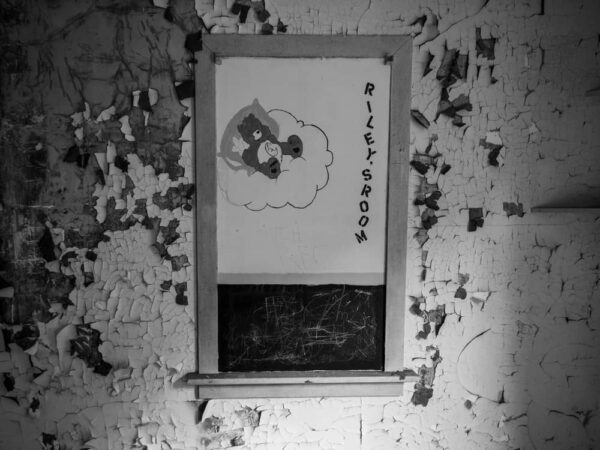
Walls in some rooms were clearly decorated as children’s rooms with murals still on the wall that tell the story of what life was like for those that occupied Yellow Dog Village just a few short years ago.
This combination of historical details and modern mementos creates an absolutely fascinating place to explore, and each home told the story of those that lived in Yellow Dog Village during its 90 years as an active community.
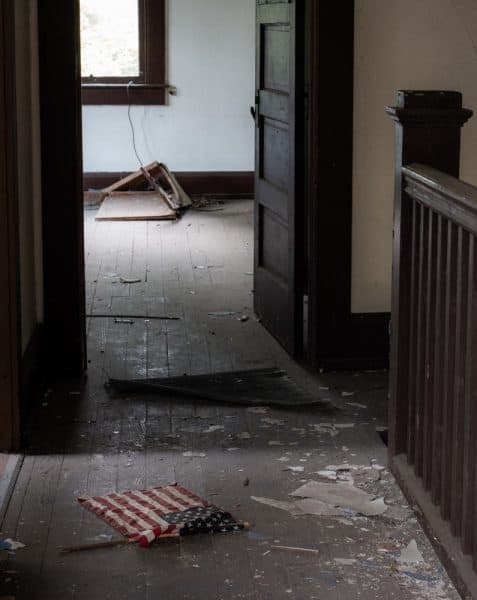
Fortunately, despite how bleak things look today, the current owner has a plan to bring life back to Yellow Dog Village.
The previous owner, who was a retired history teacher, bought the village with the goal of restoring it to its historic charm and providing a place for people to visit and experience what life was like in the 1920s.
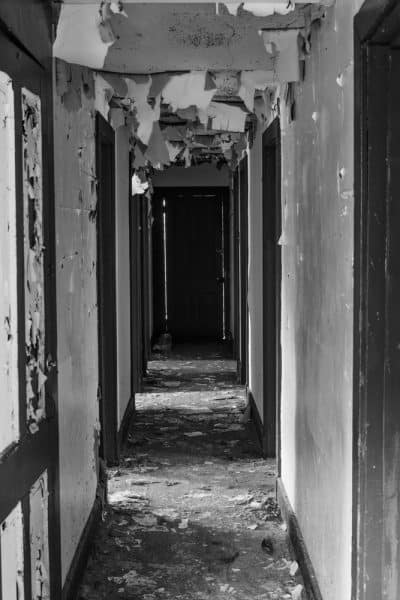
I asked Meyer to look into the future and tell me what his ultimate goal was with Yellow Dog Village, and he told me that he envisions a community where visitors can come to the homes and live for a week as if they are in the 1920s, with a few modern conveniences (battery-powered lights and bottled drinking water being two).
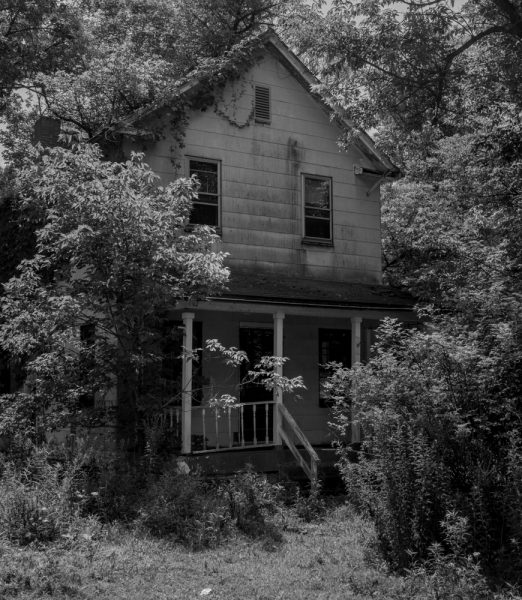
Instead of restoring each home to 21st-century living standards, his goal was to fix the homes up and make them safe, but offer a rustic living experience without most modern conveniences.
The current owner’s goal is also to preserve and maintain the homes, and open them up for visitors, as well, but I haven’t had a chance to discuss specifics with them to know what their ultimate vision is.
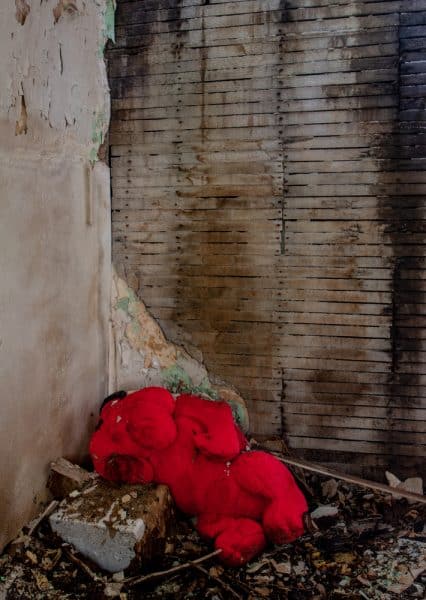
However, until funding comes through for this grand idea, Yellow Dog Village sits abandoned as a testament to life both in the 1920s and in the first decade of the 20th century. This unique combination makes it an incredibly fascinating place to explore.
Visiting Yellow Dog Village
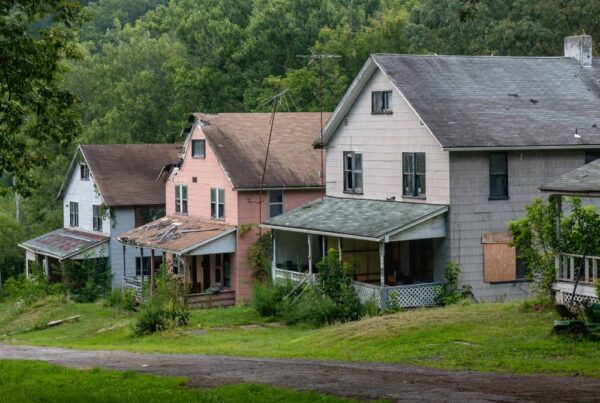
Yellow Dog Village is on private property about 20 minutes west of Kittanning in Armstrong County, Pennsylvania.
As the village is on private property, it is necessary to visit during one of their open houses or otherwise obtain permission before visiting.
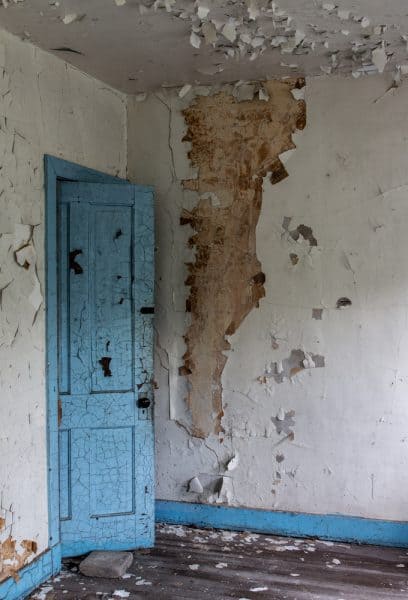
At the time of publication, visits to Yellow Dog Village are available during open houses, which are scheduled from time to time with a very reasonable price for those that want to visit.
For more information and to see any scheduled open houses, visit the village’s Facebook page.
Explore more abandoned history at the J.W. Cooper School in northeastern PA, Concrete City in Nanticoke, and the nearby Armstrong Trail. Or, if you’re visiting the area, check out the Armstrong County Historical Society Museum, the Todd Nature Reserve, and the Hyde Park Swinging Bridge.

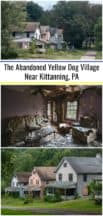
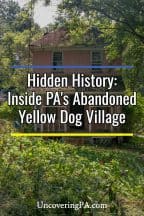
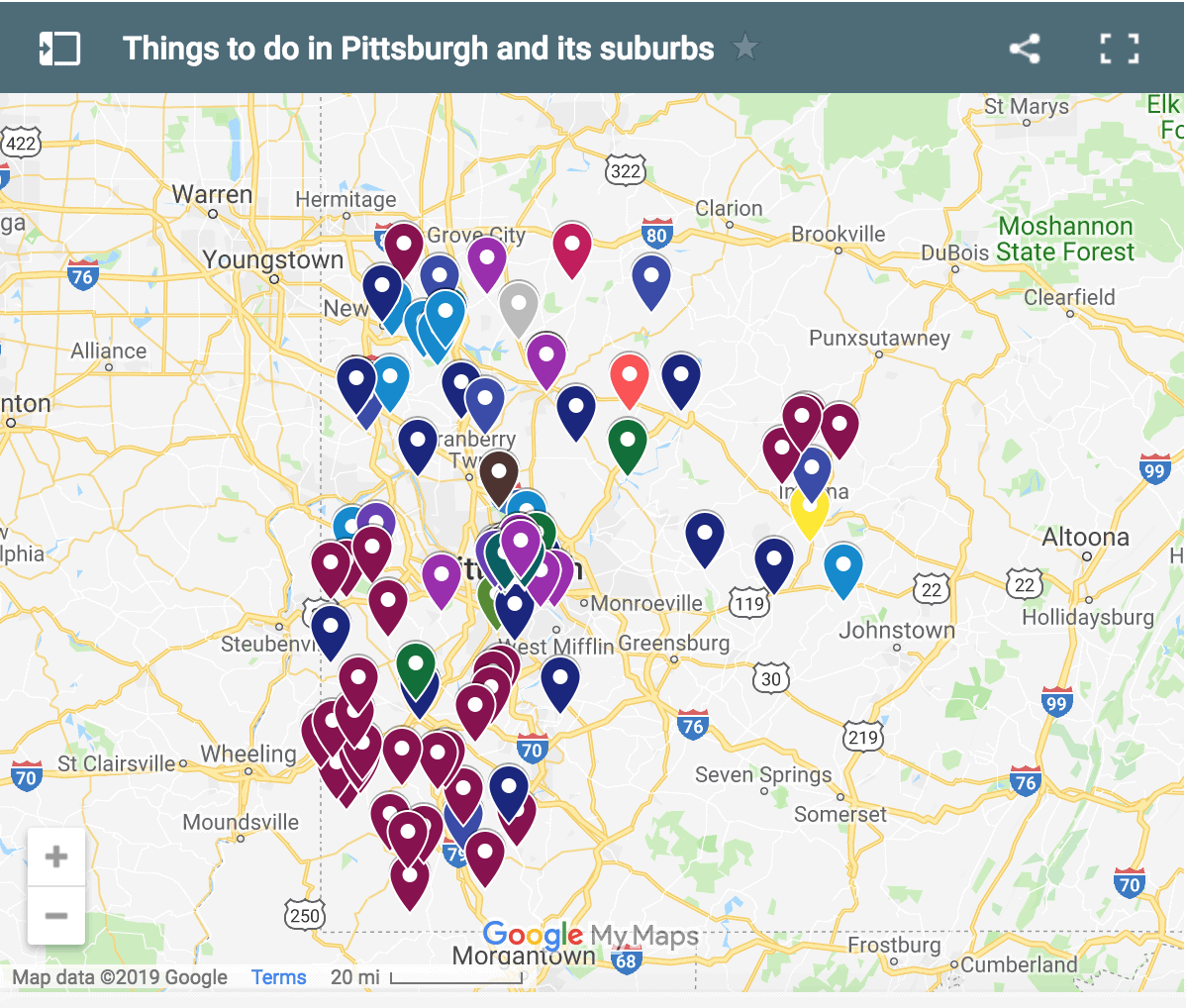 "
"
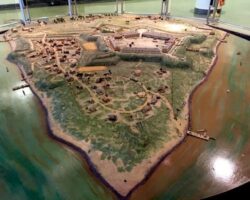
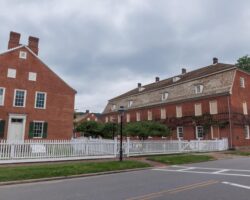
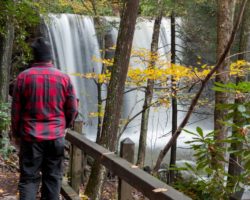

Jim,
Mr. Meyer might want to visit Cass, West Virginia, which offers overnight stays in historic company-town houses. Cass is also the home of the wonderful Cass Scenic Railroad and Park.
I went to Cass for my honeymoon August, 2017. We have made several return trips. Love the trains! It is a place lost in time. It would be neat to visit a place like that close to home!
I would love to visit this place and absolutely stay a weekend I was born in Kittanning memorial hospital by the police station in 1962 I moved to Erie in 79 I love going back home to visit
I think one way to restore the village is to sell the houses separately. One side could be that owners and the other side to rent out I am sure there could be deals made this could also raise funds for getting water and sewage. I grew up there it was a great place and would love to see it restored I can not believe that someone left the place go more should have been done to raise the funds to keep it alive
My understanding from talking to the owner is that there are issues that prevent the property from being broken up and the homes sold individually, but you’d have to ask him directly to find out the exact reason for that.
In PA the owner of a property can place deed restrictions on the property. In Chester county on an old farm that was restricted from ever being subdivided no one owns the land their house sits on; the land is still on one deed and it is tenants in common for the entire parcel of land versus fee simple ownership of subdivided plots. I would bet if you researched the deed you would find this restriction. Remember a company that did not want a union to form set this up so it would stand to reason that business interest would not want them to own the land either.
That is to bad But there is always. Ways to get around things you just have to want it bad enough I would love to see our old house My parents took care of it as if they owned it
That would be awesome gloria I will definitely check that out next time I’m down in Kittanning it’s my hometown
Hi
I would love to get in touch with Mr. Meyer about this village. Can anyone give me his contract information?
All the information to contact Mr. Meyer can be found on the village’s website which is linked to at the bottom of this article.
Another interesting article.
It was shut down because of water or sewage issues. My sister used to live there and was forced to move. A snake got into the towns well and died contaminating the water supply, and for them to hook the water back up means they had to get hooked up to a real sewage system that would cost way to much money. So everyone had to move because of state regulations. They could of drilled a new well but to do that they would have to hook into city sewage with the state regulations.
I think if they would let families move into the homes and fix them up they could do a 2 year non rental agreement and have the families fix up the homes. Check on it every 3 months to see if they are doing what was requested in the agreement . IF not they will have to move on out . After 2 years if it works out then they can pay rent and enjoy their labor. that way everyone is happy
I heard many years ago the mushroom mine hired about 50 visa workers from another country via an employment agency. The workers rented these homes. Rumor has it the employment agency embezzled the payroll and the workers were deported without their pay and belongings.
There were mushrooms grown in the mines after the mining activity stopped, but I don’t know about the rest of the story.
I think if yellow village was to be turned into a haunted scenery for the town . Would make lots of money .
This is 100% true. I worked there at the time. The workers were from Thailand and lived in Yellow dog. There were about 30 of them. I guess once they bought a pig and butchered it in the front yard…not long after that, there were deported.
I love the abandoned mysteries that this town holds. But I sure am glad that my hometown of Cadogan did not share the same fate. Cadogan has a similar layout, with the two-story houses, but it also includes a row of bungalows..Cadogan will be celebrating her centenial next year in 2022, and I am excited for it!
Lucerne Mines is another company owned community. I haven’t been there since the late 50’s and have no idea if it is also abandoned.
Don’t laugh, but maybe they should contact HGTV to see if anyone would be interested in such a project.
good idea.
That was my thought … otherwise I don’t see this going anywhere and certainly not if he thinks he’ll be able to get rentals (even for a weekend) without today’s amenities.
Eckley morning village in Waverley pa is a living museum. Also the sight used for the filming of the Molly Maguires movie. Finding for a museum would be easier to get them for a private enterprise.
Just before one would cross the bridge to the village stood the old company store. I was in that store several times. also been in many of the homes.
I talked to The Owner back when in 2020 He said The State Regs Prohibit Yellow dog Village from Ever being A Residential Town again But after I’ve read what I see here The Comments etc I realize He also said Something about it’d take $100,000 roughly to Restore it and He couldn’t find The Funding yeah He probably needs that for getting The Water Hooked back up and The City Sewage!
What’s up with Yellow Dog Village? The website and phone number no longer work. What happened? Can’t find any news articles about it.
It looks like it’s currently up for sale, but that is the extent of my knowledge. At this point, it’s probably safe to assume that it’s not open for visitors, but since I haven’t confirmed that, I haven’t removed the information.
Hi Jim, thanks for your reply. This is what I thought as well, but some recent reviews on Google Maps indicate that it is open again. It was marked as permanently closed a few months ago, but is now listed as temporarily closed, and unless the reviewers are lying, people have toured it this year (2022). I would very much like to tour here, but sadly the website no longer works and neither does the phone number provided on Google Maps. Do you have any other contact info that people could use to try and arrange a tour? Thank you!
Unfortunately, that was the only contact information that I have. Good luck!
I live a few miles away from the village. I drive past there often. There is a great episode of “Eating History” from The History Channel where the hosts of the show visit the homes in Yellow Dog, and find candy bars that have been left there and they decide to eat one!
Isn’t there a way to find the previous tenants or family members that are still living. I wonder if maybe they were children when they left and weren’t aware of photos of their family history that are still available. Now that people use things like ancestry.com there’s a lot of photos that people have posted out there that distant relatives are coming across and cherishing.
I used to live in the village. I was 11 when i moved in! Ungortunately i was there when the water was contaminated with ecoli. I was also 13 and pregnant! It is crazy how the houses look now. I lived in the pink house 2nd house up from the bottom on the right hand side! It was a nice place before everything happened!
I lived there with my 5 kids in 2010 it was a great community but the houses weren’t in the best shape then. There’s was problems with drinking the water and people getting sick because of mold
I loved the article on Yellow Dog Village. A friend took my sister,who is 98 years old, my daughter and myself there to see everything. My parents and my sister, and a brother lived there but down in the park area. My sister was 7 years old and has told us so many stories about how everything was at the time. She has been out of there for 85 years but we got to see what everything looked like now and the fun they used to have back then. I wish we could have been able to go down to the park area to see what it looked like. Probably all those homes are gone now.
I used to drop off my sister in law off at the mines were she worked picking mushrooms way down inside. It was in the 1960’s
I lived in Worthington as a child, from 1949 to 1960, my father worked in the Yellow dog mines. If anyone’s familiar with Worthington, you know where the Aluminum latter plant was. My grandparents live up behind the plant. I lives on main street next to Henrry’s store. I now live in Erie, PA. Get back once in a while to visit Dad’s grave. Great town to from!
Nice to see they are back in business, I was hoping to visit with my wife and a buddy of mine. I understand they need financial support, but at $30/per person (listed on their Facebook page) I find that a bit unreasonable.
Honestly, I think that’s a steal for what’s there. They really should be charging more, in my opinion.